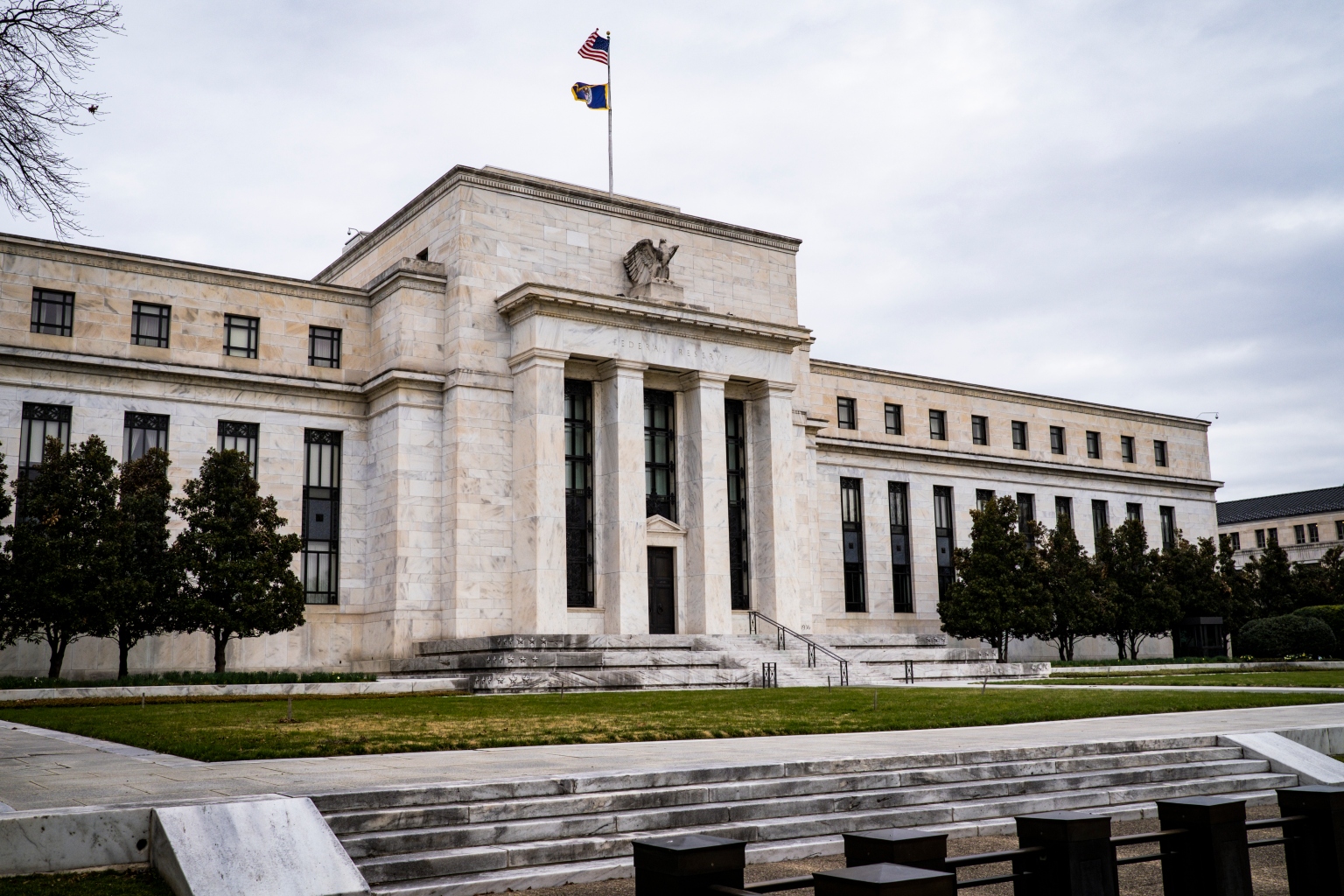Fed saw aggressive rate hikes providing flexibility later this year
Sign up now: Get ST's newsletters delivered to your inbox

US stocks rose after the minutes were published, while yields on Treasury notes fluctuated and the US dollar pared gains.
PHOTO: NYTIMES
Follow topic:
WASHINGTON (BLOOMBERG) - US Federal Reserve officials agreed at their gathering this month that they need to raise interest rates in half-point steps at their next two meetings, continuing an aggressive set of moves that would leave them with flexibility to shift gears later if needed.
While highlighting the "strong commitment and determination" of all policymakers to restore price stability, the minutes of the May 3 to 4 meeting, released on Wednesday (May 25), showed officials attentive to financial conditions as they prepare to raise rates further.
In the weeks since the gathering, financial market volatility has spiked as investors fret over the risk of a recession, though investors were cheered as they digested the less-hawkish-than-feared tone of the report.
The minutes indicate uncertainty over potential fault lines in financial markets as well as what level of rates would crimp demand as officials battle the hottest price pressures in 40 years. References to possibly moving to restrictive policy also signal that officials will not stop until inflation is on a convincing path back to their 2 per cent target. It is a strategy that signals policy will be more data-dependent after Fed meetings in June and July.
Atlanta Fed oresident Raphael Bostic suggested on Monday that a September pause "might make sense" if price pressures cooled.
"It is not unreasonable to think the Fed is underlining that the path from September onwards is not set in stone," Evercore ISI wrote in a note to clients. "But we would be careful not to overdo this and read into the Fed language any kind of Bostic September pause-like signal."
United States stocks rose after the minutes were published, while yields on Treasury notes fluctuated and the US dollar pared gains. Markets continued to show traders pricing in 100 basis points of rate hikes over the next two meetings.
Mr Vincent Reinhart, chief economist at Dreyfus and Mellon, said the committee is deploying a strategy of "muscular" gradualism with a series of half-point hikes that will push to whatever frontier is necessary to get prices lower.
"Most participants judged that 50-basis point increases in the target range would likely be appropriate at the next couple of meetings," according to the minutes. "Many participants judged that expediting the removal of policy accommodation would leave the committee well positioned later this year to assess the effects of policy firming and the extent to which economic developments warranted policy adjustments."
Fed officials "noted that a restrictive stance of policy may well become appropriate depending on the evolving economic outlook and the risks to the outlook", the minutes said. They said that labour demand continued to outstrip available supply.
Worry about the outlook for corporate profits and rising interest rates has also roiled financial markets. The S&P 500 stock index is down about 17 per cent in the year to date, while US Treasury two-year notes yielded 2.5 per cent versus about 0.8 per cent in early January.
At the meeting, officials also finalised plans to allow their US$8.9 trillion (S$12.2 trillion) balance sheet to begin shrinking, putting additional upward pressure on borrowing costs. Starting June 1, holdings of Treasuries will be allowed to decline by US$30 billion a month, rising in increments to US$60 billion a month in September, while mortgage-backed securities holdings will shrink by US$17.5 billion a month, increasing to US$35 billion.
"Regarding risks related to the balance sheet reduction, several participants noted the potential for unanticipated effects on financial market conditions," the minutes said.
"I think the Fed has to risk a downturn," Mr Ethan Harris, head of global economics research at Bank of America, told Bloomberg Television. "The real question is going to come later, when we get into the fall and when they decide whether to slow down or pause."
The record also showed that the Fed staff revised up their inflation forecast. They estimated that the personal consumption expenditures price index would rise 4.3 per cent in 2022 before decelerating to a 2.5 per cent increase next year.
The Fed's target for its preferred inflation gauge, the Commerce Department's personal consumption expenditures price index, is 2 per cent a year. The measure rose 6.6 per cent for the 12 months ending March, while the Labour Department's consumer price index rose 8.3 per cent in April.
High inflation has angered Americans and hurt President Joe Biden's approval ratings, with ire also directed at the Fed. Even so, Fed chair Jerome Powell was confirmed by the Senate to a second term this month in an 80-19 vote.
So far, the rise in borrowing costs has yet to significantly dent consumer demand. Retail sales rose at a solid pace in April, although with the 30-year mortgage rate now above 5 per cent, the pace of home sales has slowed.

